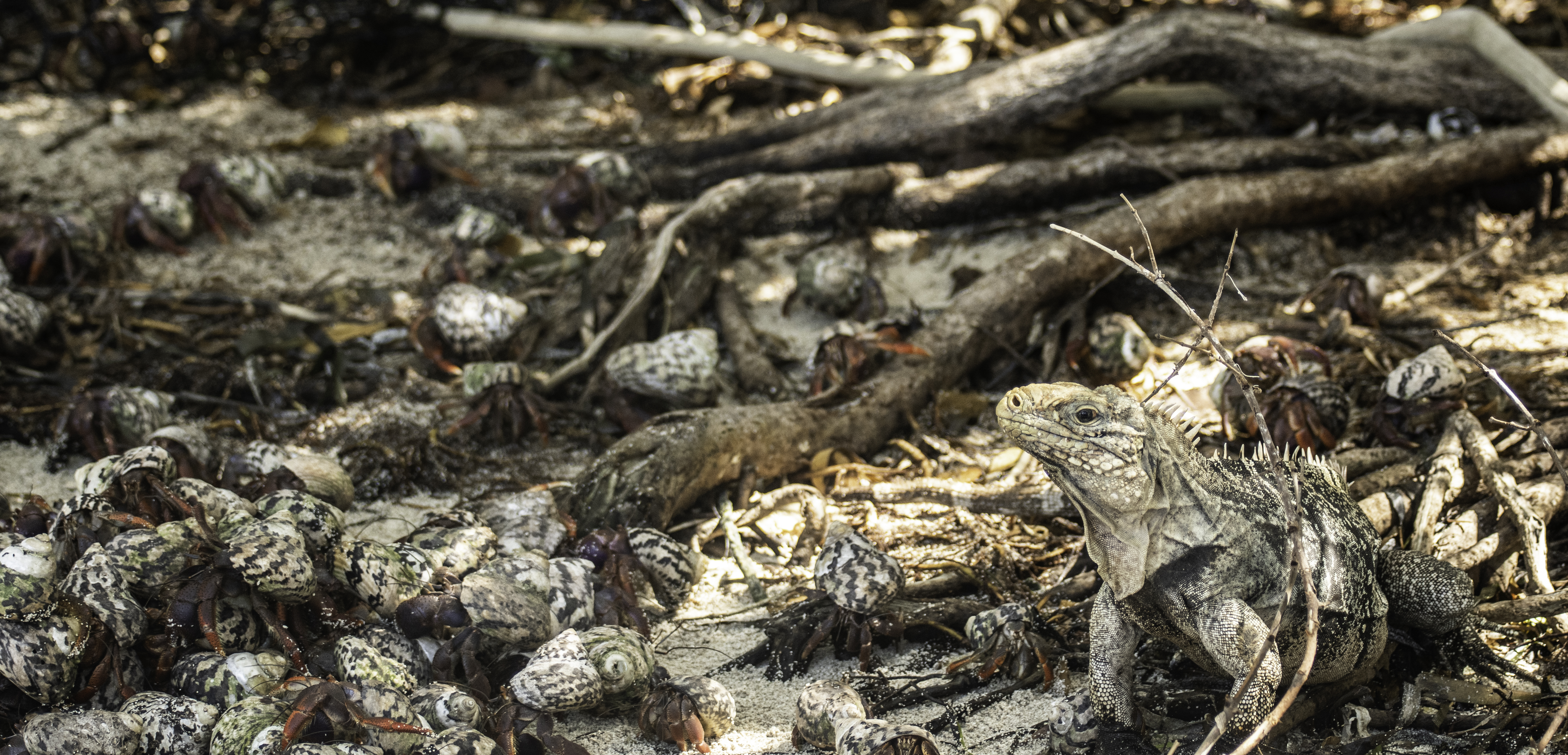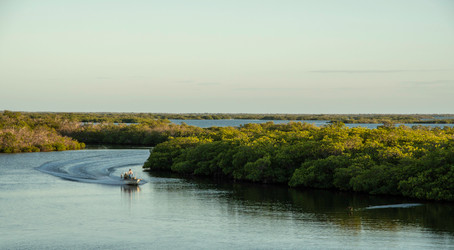Cuba Revisited 2023
Posted by by Steve Schmidt, Photos: Steve Schmidt, Schorr Behnke on Mar 21st 2023
 A solitary bonefish slowly pushed water across an expansive flat of dark turtle grass, its large tail and dorsal glistening in the late afternoon sun. In range, I cast, laying the fly in its path. With one short strip the fish lunged forward. Another and the fish paused, tilted, then pounced on the fly like a cat on a ball of string. Mayhem erupted on the flat as the alarmed fish frantically fled. After an initial acceleration, the bonefish punched it, my old Billy Pate screaming in resistance as fly line and backing disappeared into its distant wake. After another impressive acceleration I reeled the reluctant fish to the boat. It wasn’t the biggest fish of the trip, but another nice solid bonefish that punctuated a beautiful afternoon fishing Cuba’s, Jardines de la Reina; a 100 mile isolated archipelago off its southern coast. A destination far removed from the world and relatively unspoiled that I and seventeen other anglers recently visited and fished.
A solitary bonefish slowly pushed water across an expansive flat of dark turtle grass, its large tail and dorsal glistening in the late afternoon sun. In range, I cast, laying the fly in its path. With one short strip the fish lunged forward. Another and the fish paused, tilted, then pounced on the fly like a cat on a ball of string. Mayhem erupted on the flat as the alarmed fish frantically fled. After an initial acceleration, the bonefish punched it, my old Billy Pate screaming in resistance as fly line and backing disappeared into its distant wake. After another impressive acceleration I reeled the reluctant fish to the boat. It wasn’t the biggest fish of the trip, but another nice solid bonefish that punctuated a beautiful afternoon fishing Cuba’s, Jardines de la Reina; a 100 mile isolated archipelago off its southern coast. A destination far removed from the world and relatively unspoiled that I and seventeen other anglers recently visited and fished.
This was my second visit to this remote saltwater destination. It had been over a decade since my first Cuban excursion. That visit required a little undercover work to enter and exit the country, which brought a bit of anxiety to those who made that trek. Back then, 2004, the Avalon group was working to establish itself in this somewhat prohibitive saltwater destination. I can only imagine the challenges they were faced with in those early days since Cuba remains a communist country and one in particular that Americans weren’t supposed to casually enter.
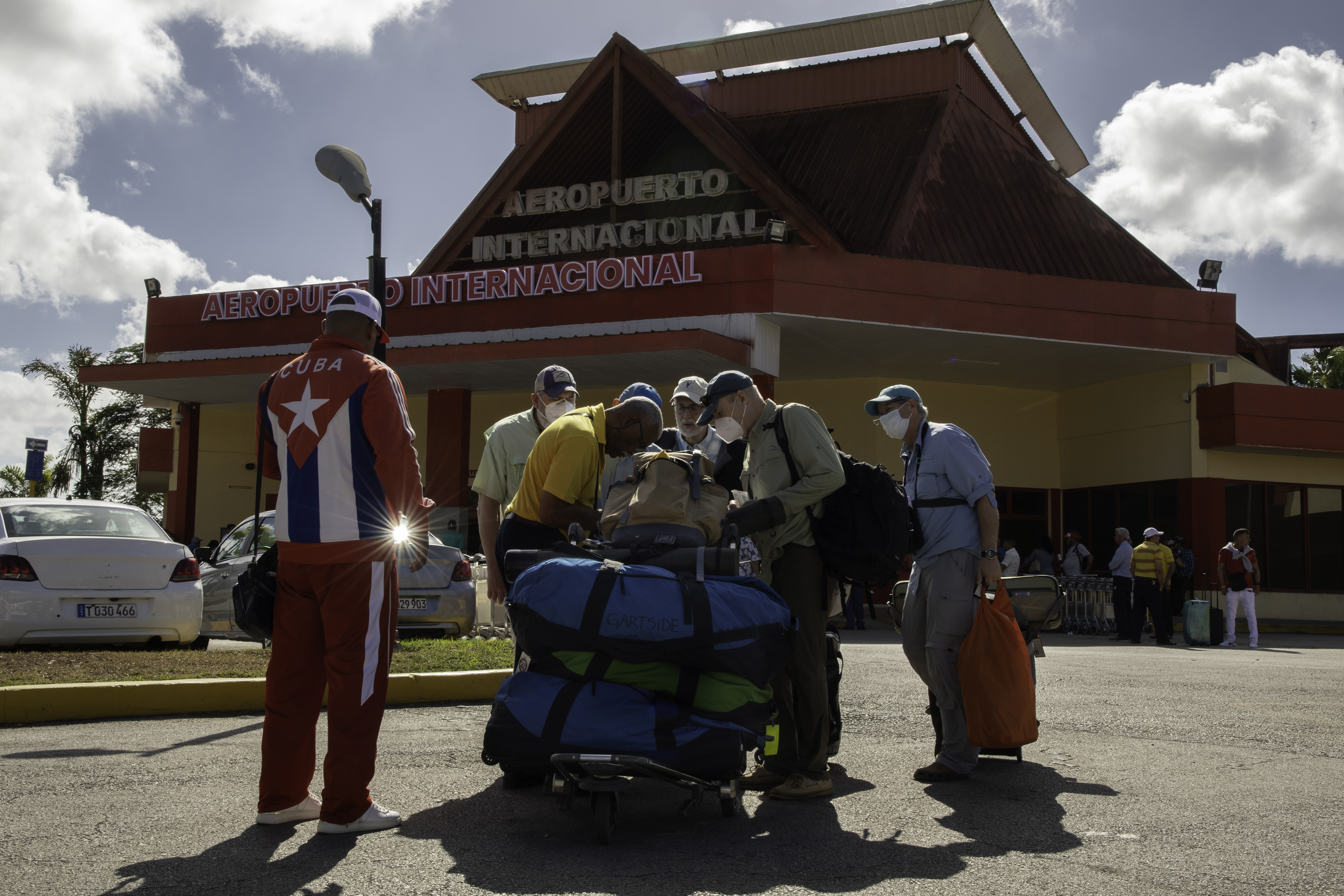
On that initial adventure we slipped in through Cancun, overnighting there before flying to Havana. After arriving most of us stayed up through the night, since we had such limited time in the Cuban capital city. The following morning, I and those I traveled with gathered in a fog, some literally, sheltered under a small thatched hutch waiting to board a flight east to Cayo Coco. I kept waiting for Ernest Hemingway to appear. After reaching Cayo Coco, we boarded a bus for a lengthy ride dissecting the heart of the country frequently dodging slower vehicles, and horse drawn carts before arriving in the small impoverished port city of Jucaro. There a liveaboard awaited our arrival; our water taxi to the Jardines, and home for a week in the Queen’s Garden.
Upon returning in February, we avoided Havana, choosing to fly from Miami to Camaguey; a city that lacks the allure and sense of history that Havana exudes, but makes for more efficient travel. Now it's not necessary when arranging a fly-fishing trip through Avalon to slip into the country under the cover of darkness, but it doesn't mean you'll avoid anxious travel moments. Once on the ground, similar to most foreign airport encounters, there was chaos and confusion as we anxiously awaited and gathered our bags, before shuffling through an inordinate amount of paperwork and being allowed to exit the terminal.
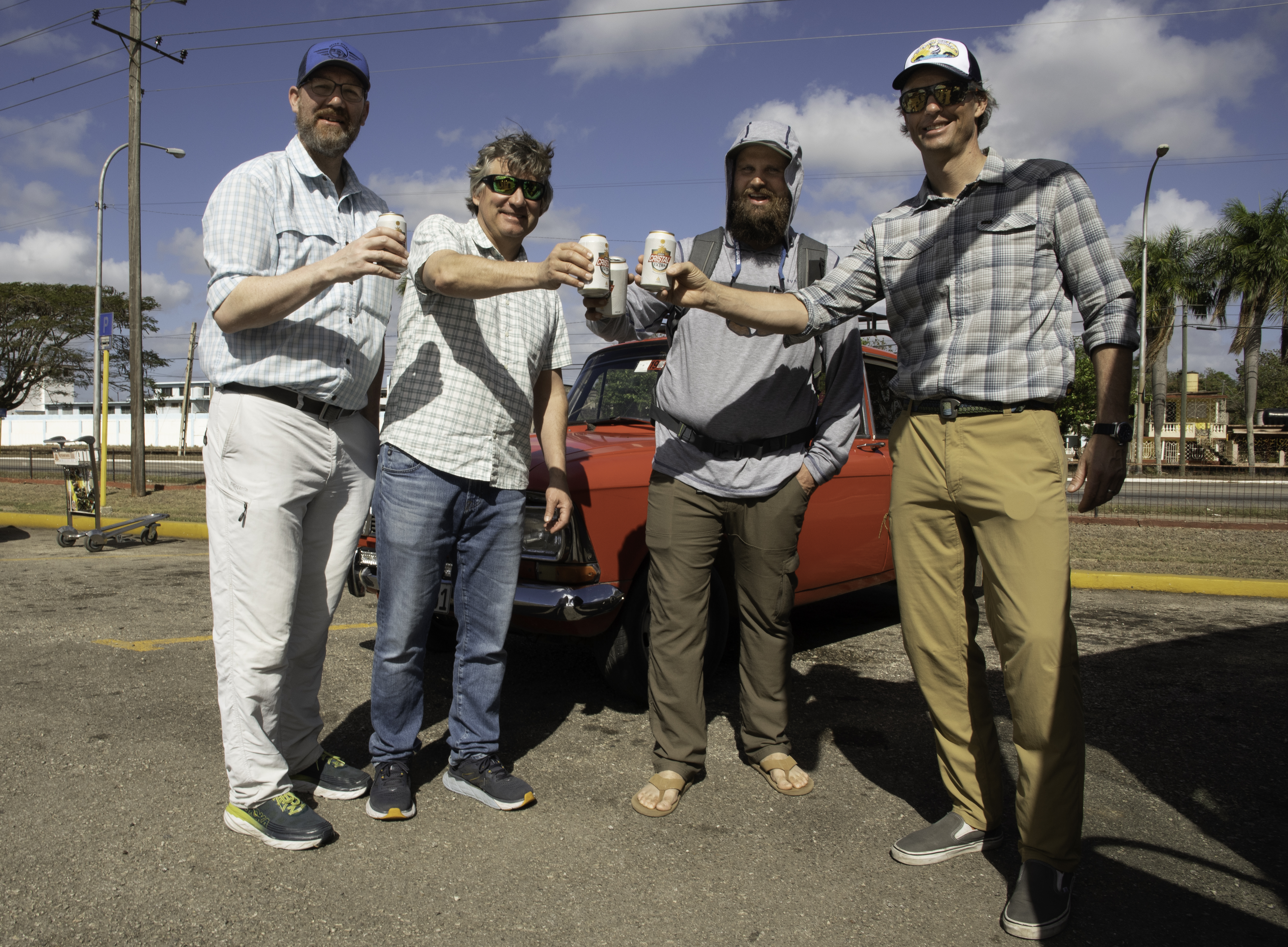 Those who navigated the chaos first were greeted by our transfer host, taken to our bus, and soon served up a round of cold beers, which we gladly accepted. There was still a lengthy bus ride through the southeastern part of the island before arriving in the impoverished port city of Jucaro, where the Avalon IV awaited our arrival. Horse drawn carts, vintage cars, pedestrians, and motorcycles remained a dominant means of transportation on Cuba’s ill repaired roads. Their presence on the country's narrow thoroughfares created a fairly erratic, and challenging drive. Fortunately our driver cautiously navigated the various obstacles with patience and skill, however those sitting in the bus's front seats weren’t exactly put at ease given their view and the obstacles the driver frequently encountered.
Those who navigated the chaos first were greeted by our transfer host, taken to our bus, and soon served up a round of cold beers, which we gladly accepted. There was still a lengthy bus ride through the southeastern part of the island before arriving in the impoverished port city of Jucaro, where the Avalon IV awaited our arrival. Horse drawn carts, vintage cars, pedestrians, and motorcycles remained a dominant means of transportation on Cuba’s ill repaired roads. Their presence on the country's narrow thoroughfares created a fairly erratic, and challenging drive. Fortunately our driver cautiously navigated the various obstacles with patience and skill, however those sitting in the bus's front seats weren’t exactly put at ease given their view and the obstacles the driver frequently encountered.
For those making the trip for the first time, this part of our journey is reflective as one gets a brief glimpse into life and the poor living conditions that face most of Cuba’s citizens. For those who have never been to Cuba, it is very much a third world country. Similar to my first trip, we were unsettled by the impoverished state that permeates this country. The simple fact that we can come and go as we please is an overlooked privilege that Cubans don’t have, and one of a number of freedoms we have that so often are taken for granted. As we near Jucaro, it's good to put this aspect of place in perspective since we’ll be sharing time with a crew and fishing guides who are faced daily with this oppressive country's struggles.
When Bryce organized a hosted Western Rivers trip to Cuba for 2023, and invited me to round out the group of 18, I dug out my old journal and read my noted impressions from that 2004 adventure. To date I rate that trip as the best saltwater trip I’ve been fortunate to be on. As this year's trip neared my writings of an indigent yet welcoming country, tailing bonefish and eager tarpon made me anxious to return to the Jardines. In particular I was curious to see what might have changed in Cuba and in this vast archipelago, knowing that the country had been more open to visitors for a number of years.
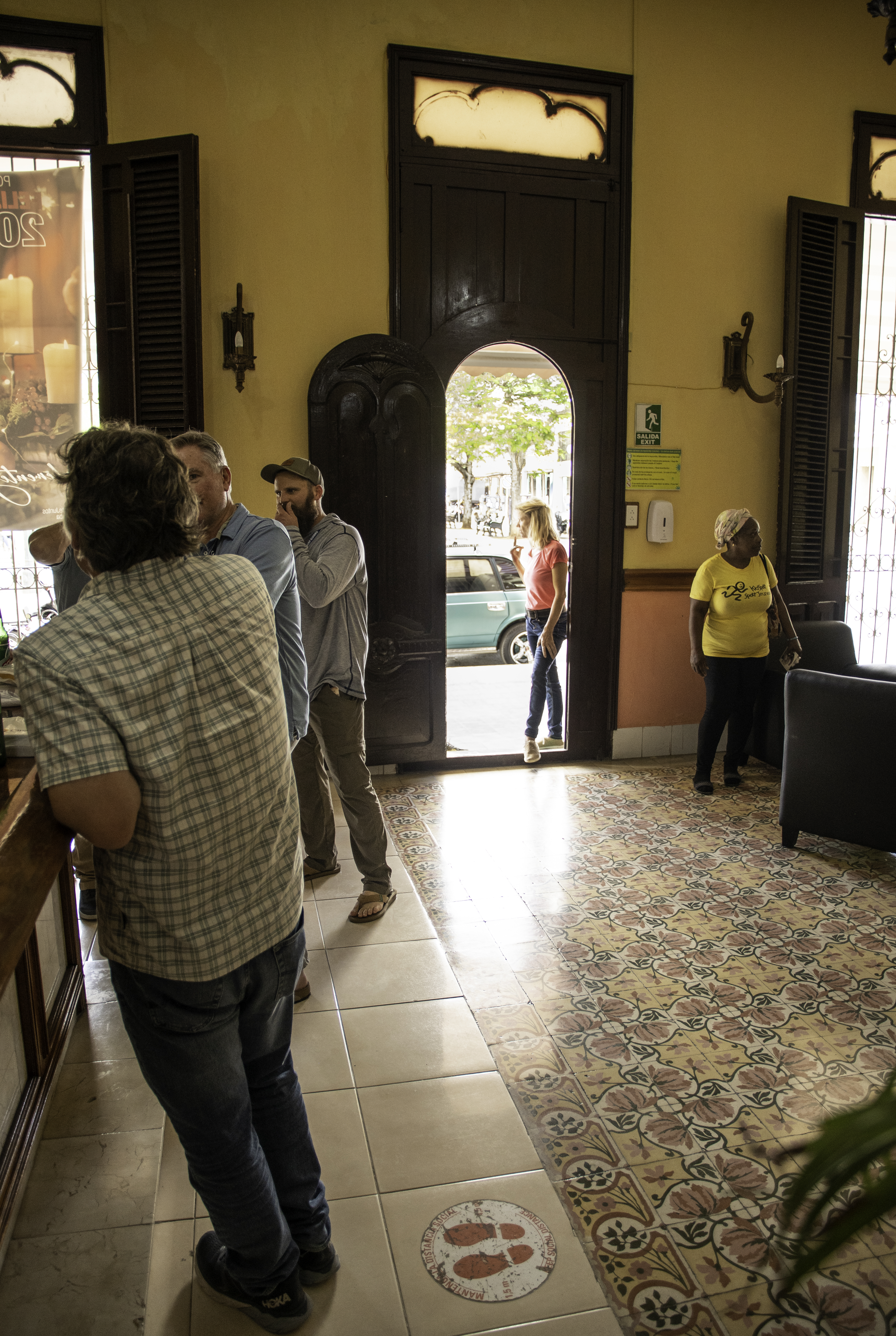
Upon reaching port, it was immediately apparent that the fleet of Avalon boats had been significantly upgraded. The three tiered vessel, the Avalon IV, we’d call home for the next week had twenty spacious double rooms and would comfortably host our group, and a similar sized entourage of divers from the Czech Republic. In an effort to minimize the angling pressure Avalon has created a diving program that rivals the pristine angling experience one enjoys while fishing the Jardines de la Reina. Cuba as well has realized the value in its ecosystems and created marine sanctuaries, the Jardines lying within one of them. It would appear that there is a respectable sense for what is here and steps have been taken to ensure their protection.
Soon after leaving Jucaro behind, beers were cracked and preparation for the fishing ahead began. It didn’t take long for some of the crew to break out their fly boxes, start building leaders, and eventually rig their rods. Others chilled realizing we had a four hour boat ride and were more intent on enjoying the warm tropical breeze, preferring to ease into the trip with a cold one, a cigar, or beverage of choice. As the day wore on and dinner approached, one of the guides attempted to secure some of our rods that had been assembled and stowed in the extensive ceiling racks. Fortuitously in the process a new 11wt outfit fell overboard. It was Coleman’s new set up. It happened just as I arrived on the bottom deck where anglers and divers would gather every morning to begin their day. Mayhem ensued, as guides and those of us who witnessed the unfortunate incident frantically scanned the darkening waters for the outfit. To the dismay of all it was obviously hopeless. Unfortunately the incident left the guide visibly distraught and those managing the ships affairs significantly concerned. A somber mood overtook us, when Coleman with a smile on his face chalked it up simply to “shit happens”. One moment we were analyzing the potential impact of this misfortune, only for it to be swiftly diverted as Coleman deflected its probable negativity from the moment and the days ahead. Later, ironically he would be rewarded for his offering. After a delicious dinner, another

round of drinks and evening cigar at the bar, we’d all moved on to what lay ahead.
Day one couldn’t have come soon enough after the long two days of travel to get here. It greeted us with calm seas and some lingering clouds that would soon evaporate into a deep blue cloudless sky. By mid morning once the clouds dissolved it was about as perfect a day as one could ask for. As the group headed out, there was a wide range of fish agendas, the only thing we shared in common is we all wanted to catch one. Some bonefish, others tarpon, and a few one of saltwater fly-fishings more elusive targets, a permit. They were all here, in addition to big barracuda, aggressive jacks and delicious snapper. All would play a role in our fishing success as the week unfolded.
That first day I fished with Flo; a good friend and angling partner I’ve shared waters with in many incredible places. Our guide Raudel had an amazing set of eyes. He also had a good intensity and a warm friendly smile. It wasn‘t long before we found the day's first targets after initially swinging blindly for tarpon at sunrise. Raudel saw them before we did, which was pretty much the case on all our fish encounters. They were good sized bonefish and to our delight willing takers. Like most of the guides here, when the tides are right they seem to have a preference for pursuing permit, which is what we did soon after landing a few bones and the tide began to swing upward.

We covered a lot of water hoping a forked tail would show from the edge of one of the permit flats we explored. We eventually ended up on a small island far removed from the northern edge of the archipelago. Its spectacular white sand beach, a stark contrast from the emerald hues of the ocean, and deep blue sky. I was on deck when Raudel spotted a small school of bonefish far up on the flat. I quickly stuck one, and after a good long run it came unbuttoned. I jumped down and gave Flo a shot at the same school while I reeled in my line. He stuck a fish that ripped him across the flat well into his backing numerous times. When he finally brought it to hand, it was long with big shoulders. That sizable bonefish combined with this idyllic setting left us with one of the trips more indelible moments. We felt like we were the only anglers in the Jardines, and given the expansiveness of this place you often feel far removed from others, including the rest of the world. There’s some solace in that.

At day's end back aboard the Avalon IV, the crew gathered around the boat’s focal point, the bar. Upon arriving I’m greeted by a waft of cigar smoke, and an array of exuberant conversations exulting the day's adventure. As the week unfolded, this scene would play out daily. Dabi, who tends bar among other duties, is serving delicious Mojitos when I arrive. How could one refuse one of these after a warm day on the flats? Joining a rather boisterous conversation, what quickly surfaced was the variety in everyone's successes, or lack thereof. That seemed to hold true everyday. From fish numbers, to species, to overall opportunities our days were always a cornucopia of experiences. The one constant, the good sized bonefishing consumed part of every daily recollection. I don’t remember or did I note that anyone caught fish up to 8 lbs, or one that possibly reached double digits when I revisited my journal. I did however, note that they were impressive, and that they were.

About midweek arriving at the bar I heard that someone had caught a permit. There were already a number of highlights from our time here, but none would be more celebrated or well documented than this fish given the circumstances. Remember earlier in the article I alluded to the fact that Coleman would be rewarded for his offering. Yep, he stuck and landed the only permit of the week. It was a big deal. They’re always a big deal when you catch one. To top it off, he was wading and pulled off one of saltwaters more improbable feats without assistance. Who says there is no such thing as Karma. That night his boat was the last one in. Typically, chasing another elusive saltwater feat, the Grand Slam: catching a bonefish, permit and tarpon in a single day. Ironically by day's end they couldn’t catch a bonefish, yet there was little if any disappointment in this. That night, bar banter rose a notch, if that was possible, and the moment was boisterously shared and relieved well into the night.

I think Billy quite animatedly summed up the diversity this pristine fishery offers one evening as he reenacted a day and fish worth noting. Those who know Billy, recognize that it doesn’t take much to get him fired up, especially if you're talking about his beloved Cowboys. This day was on par with his outward enthusiasm that he can exhibit towards his favorite football team. Although he didn’t land a permit, he seemed to catch every other species of fish that occupied these Cuban waters, and most of them were impressive.
Billy was looking to change things up, having caught his share of bonefish here and in other saltwater destinations. He’d landed a tarpon on day one, the first for the group. Earlier in the week a few of the crew had taken a few jacks on poppers, which piqued his interest. Billy hit Bryce up to see if he had any to spare, hoping to replicate their success and try something new. Bryce was able to accommodate him with a couple of rather large poppers that had been collecting dust in his fly box and that he was happy to be rid of. The following day those flies gave Billy the results he was hoping for. He stuck a jack almost three feet long and a barracuda that conservatively went over thirty pounds. Both fish hammered the popper, the cuda clearing the water as it attacked the fly. As Billy relieved those moments his arms flailed as he recounted the aggressive eats and battle each significant fish played out. I know when he returns in 2024, there will be a few more poppers in his and our fly boxes, and some of them will be quite large.
My most memorable day of the trip was the day I was paired with Matt Lucas. For those who don’t know Matt, he bought our Green River permit after working in the shop for some years, before then putting some time on the Green guiding. His energy and love of fishing is infectious, yet it wasn’t the fishing that made the day so memorable.

After landing that beautiful bonefish that I referenced in the opening of this article, Matt and I cracked a beer for the long ruminative ride home. As we ran across a calm sea that melted into the horizons fading light, our motor died. When we realized we weren’t going anywhere soon, we assessed what assets we might have to get through the night, since we had no means of contacting anyone to alert them of our situation. I don’t think we ever got past the fact that we were down to one beer, before Matt jumped up on the poling platform so our guide could fish and to pass the time. Some of our crew was still out, so we felt there was a good chance as they headed in, they’d locate us. In the stillness after thirty to forty minutes elapsed, when no boats appeared, we went to plan B: polling the skiff a mile or so to one of Avalon’s dive boats. After considerable effort and time poling the skiff, we finally heard a distant boat, then two. Somewhat frantically waving life jackets and arms like one of those air in powered marketing puppets we got their attention. After a brief plan of action, we grabbed a few of our comrades beers before partying ways. We didn’t want to leave or guide, and thought if we stayed with him we might even find a fish or two while we waited.
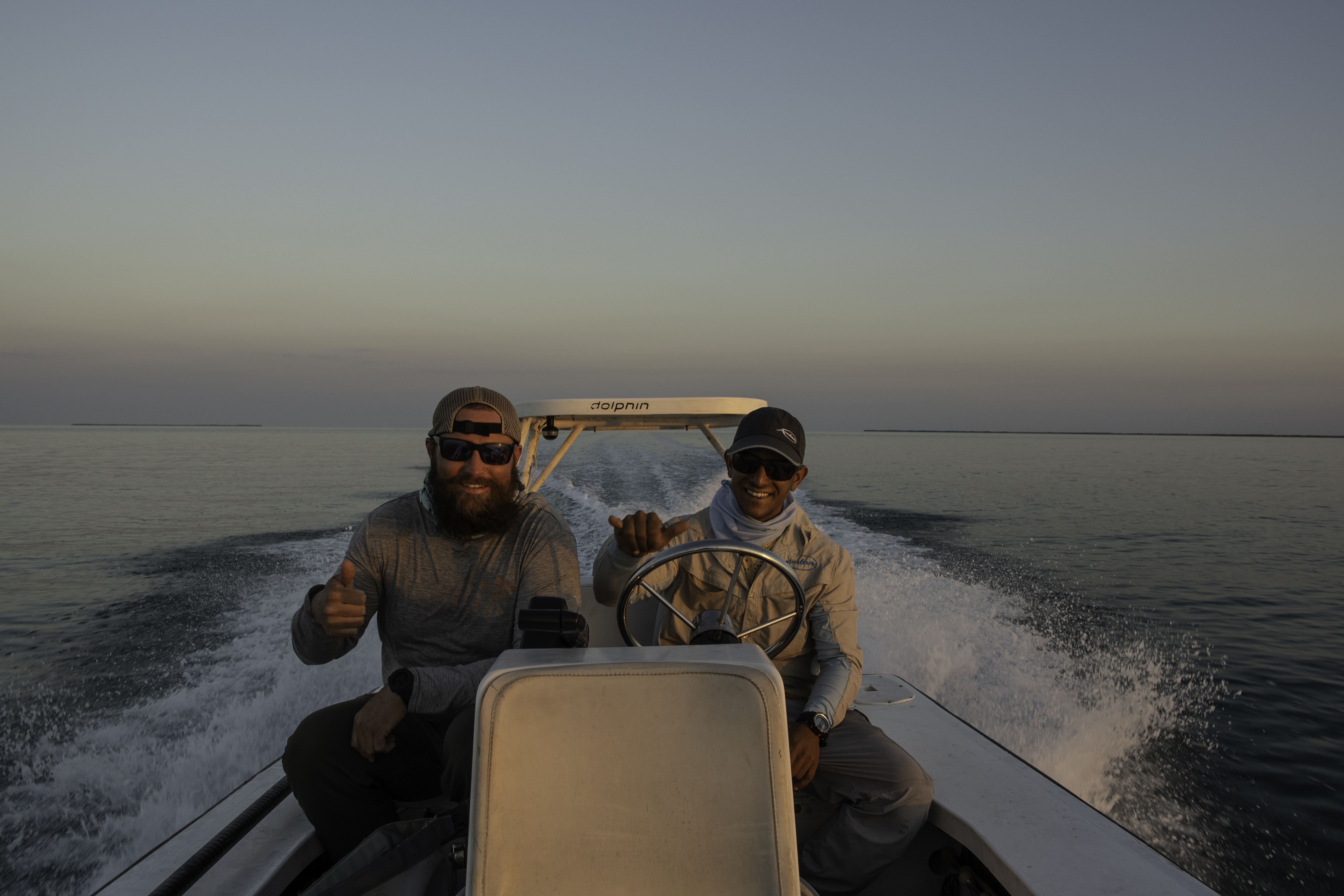
By now the sun was low in the west. Near a stand of mangroves adjacent to where we sipped our newly acquired beers, some bonefish were tailing. Matt and I needed no further invitation and soon slid into the water stalking them, our situation thrown to the wayside. Although we didn’t stick any, between the fading light, and the evening's quiet stillness it was a magical moment knowing we were the only ones out in this vast unspoiled archipelago fishing far removed from the world. Eventually help arrived, the boat's motor invading the evening's therapeutic calm. Within a short period of time they had the motor running. Into a glowing sea we ran over waters so surreal it was hard to tell where they began and ended. It was a long day for our guide, but a day that Matt and I would not soon forget. Back at the boat, we got to add our story to the tales being spun around the bar. All part of a days fishing in the middle of nowhere, and for a brief moment it definitely felt that way.
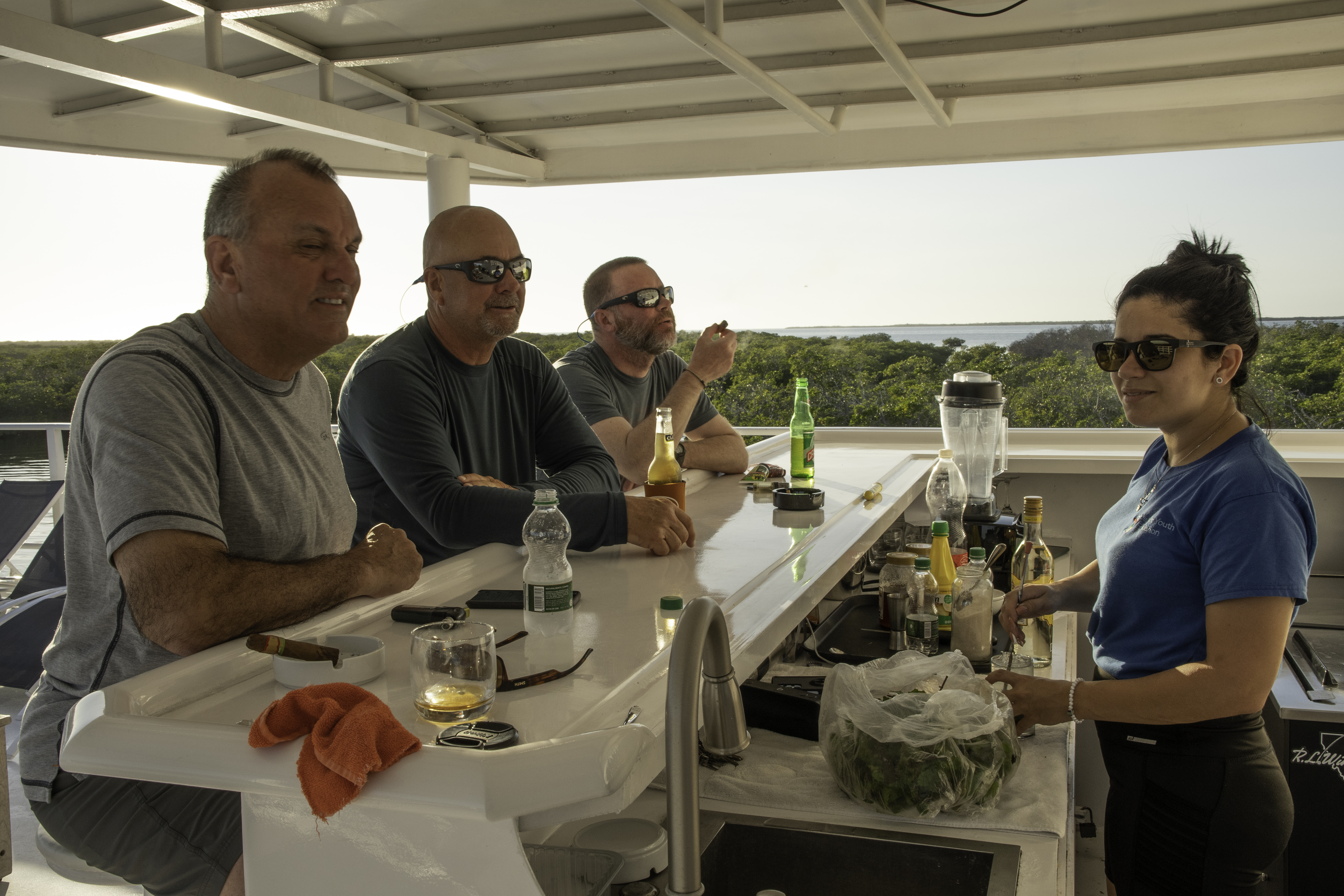 On our final outing we only fished half the day before pulling anchor and heading for port. As we mulled about the ship quietly dismantling rods, and packing in preparation for our travels home none of us were ready to go. Four hours later arriving in Jucaro we gathered a final time on the upper deck of the Avalon IV admiring one of the week's best sunsets while enjoying a last round of Dabi’s delicious Mojitos or beverage of choice. That final night, I thought about one of my curiosities that I had pondered before arriving here; had things changed? On one hand, as I alluded to earlier, they had. Avalon’s updated fleet of vessels was impressive. So was the incredible display and assortment of thoughtfully prepared meals. What had not changed, unfortunately for those who live in this isolated country was life in Cuba, or travel once you arrive here. Regarding the fishery, it too appeared to remained unaffected, diverse and pristine. Avalon has done an admirable job of spreading it's users out across this expansive archipelago and splitting it's footprint among its divers and anglers. I remember commenting one day about the miles of deserted white sand beaches we came across. If this was anywhere but Cuba, those white sands would have been littered with cabanas, hotels and resorts, these flats overrun with jet skis and other vessels. Instead it remains pristine and protected from development and commercial fishing as a marine santuary. For now, it's just you, the birds, a bunch of crabs, some ornery looking iguanas and a hundred miles of endless flats that are home to tailing bonefish, tarpon and the occasional permit. At least in the near future, I’m fairly confident it will remain that way.
On our final outing we only fished half the day before pulling anchor and heading for port. As we mulled about the ship quietly dismantling rods, and packing in preparation for our travels home none of us were ready to go. Four hours later arriving in Jucaro we gathered a final time on the upper deck of the Avalon IV admiring one of the week's best sunsets while enjoying a last round of Dabi’s delicious Mojitos or beverage of choice. That final night, I thought about one of my curiosities that I had pondered before arriving here; had things changed? On one hand, as I alluded to earlier, they had. Avalon’s updated fleet of vessels was impressive. So was the incredible display and assortment of thoughtfully prepared meals. What had not changed, unfortunately for those who live in this isolated country was life in Cuba, or travel once you arrive here. Regarding the fishery, it too appeared to remained unaffected, diverse and pristine. Avalon has done an admirable job of spreading it's users out across this expansive archipelago and splitting it's footprint among its divers and anglers. I remember commenting one day about the miles of deserted white sand beaches we came across. If this was anywhere but Cuba, those white sands would have been littered with cabanas, hotels and resorts, these flats overrun with jet skis and other vessels. Instead it remains pristine and protected from development and commercial fishing as a marine santuary. For now, it's just you, the birds, a bunch of crabs, some ornery looking iguanas and a hundred miles of endless flats that are home to tailing bonefish, tarpon and the occasional permit. At least in the near future, I’m fairly confident it will remain that way.
